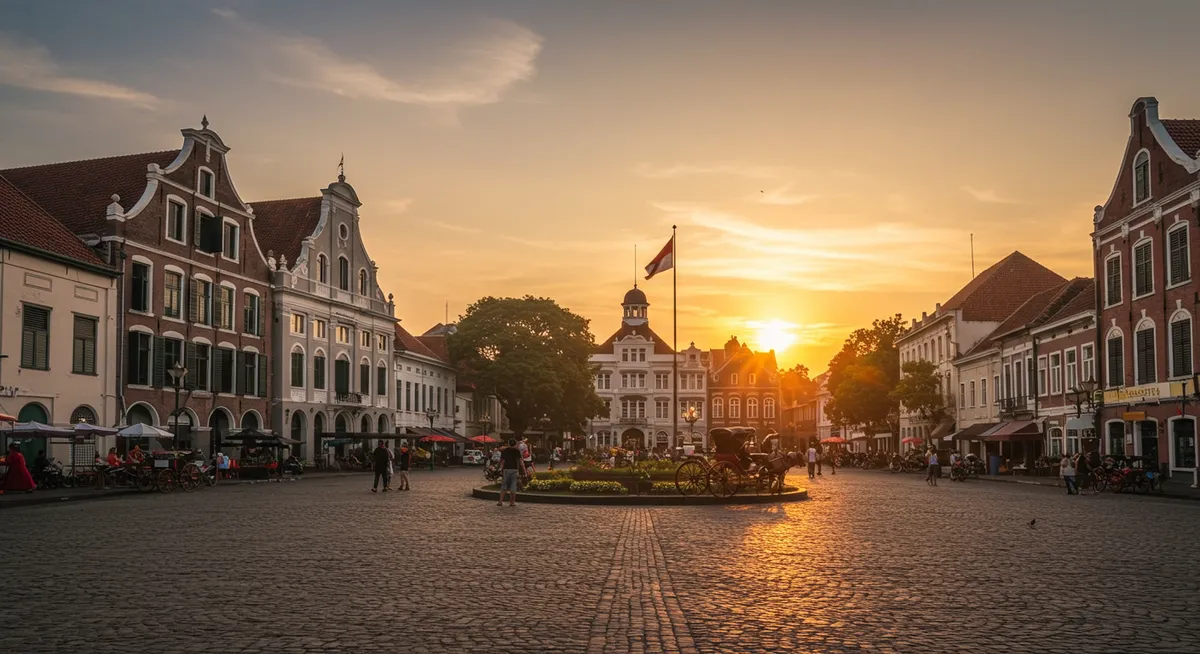
Kota Tua Jakarta: Attractions & History Guide
Table of Contents
Want to find the best travel deals for this destination? Chat with our travel hacking specialist!
Get Travel HacksCategory: kota-tua-jakarta-attractions-and-history
Unveiling Kota Tua Jakarta: Attractions, History, and More
Having explored countless historical sites across Southeast Asia, I can confidently say that Kota Tua Jakarta offers a unique window into Indonesia's past. This vibrant historical quarter, often referred to as Old Batavia, is a testament to Jakarta's colonial heritage and a treasure trove of cultural experiences. From grand Dutch-era buildings to bustling Fatahillah Square, the attractions here tell a compelling story. This guide delves into the essential Kota Tua Jakarta attractions and history, providing insights to help you navigate its charming streets and uncover its captivating narrative.
The Enduring History of Old Batavia
To truly appreciate Kota Tua, one must first understand its rich historical roots. Originally known as Batavia, this area was the administrative center of the Dutch East India Company (VOC) and served as the capital of the Dutch East Indies for centuries. Its architecture reflects distinct European influences, particularly Dutch, providing a stark contrast to the modern cityscape surrounding it. The layout of the old town, with its canals and grand squares, was meticulously planned to mirror cities in the Netherlands. Exploring this area gives you a palpable sense of the colonial era. For a broader understanding of the capital, consider our comprehensive Jakarta travel guide before your visit.
Iconic Attractions of Kota Tua Jakarta
At the heart of Kota Tua lies Fatahillah Square, a bustling hub surrounded by some of Jakarta's most significant museums. The Jakarta History Museum, housed in the former Batavia City Hall, offers deep insights into the city's journey. Nearby, the Wayang Museum showcases traditional Indonesian puppetry, a fascinating cultural art form, while the Fine Art and Ceramic Museum displays exquisite Indonesian art and ceramics. My personal tip: rent a colorful vintage bicycle right in the square to cycle around the area, providing a fun and authentic way to see these Kota Tua Jakarta attractions. Learn more about planning your trip to Indonesia by visiting our main travel site.
Beyond the Museums: Cultural Experiences
While the museums are central, Kota Tua's appeal extends beyond its historic buildings. The area pulsates with local life, offering unique cultural experiences. Street performers entertain crowds in Fatahillah Square, local vendors offer traditional snacks, and numerous cafes provide a chance to relax and people-watch. One highlight is the Café Batavia, an iconic colonial-era restaurant known for its charming ambiance and delicious food. Wandering through the smaller alleys, you might discover hidden antique shops or vibrant street art. To make the most of your cultural exploration, know the best time to visit Jakarta for pleasant weather.
Navigating Kota Tua: Practical Advice
Getting to Kota Tua is relatively easy via TransJakarta buses or ride-hailing apps, making it an accessible day trip for most tourists. Once there, the entire area is best explored on foot, allowing you to truly soak in the atmosphere and discover its many nuances. Wear comfortable shoes and be prepared for tropical weather. Hydration is key! As with any bustling city, it's wise to be aware of your surroundings, especially in crowded areas. Overall, Jakarta is a welcoming city, and you can find more information on safety for tourists in Jakarta to ensure a smooth visit.
Preparing for Your Trip: Visa & Entry
Before embarking on your journey to experience the remarkable Kota Tua Jakarta attractions and history, it's crucial to ensure all your travel documents are in order. Depending on your nationality, Indonesia may require a visa for entry. Many countries are eligible for visa-free entry or a Visa On Arrival (VOA), but requirements can change. Always check the latest regulations well in advance of your departure date. Having your passport and any necessary visa documentation prepared will allow you to enter Indonesia smoothly and begin enjoying your historical adventure without any unnecessary delays. For comprehensive details, review the Jakarta visa requirements for tourists.
Frequently Asked Questions
What is the best way to get to Kota Tua?
Are there entrance fees for attractions in Kota Tua?
What food can I find in Kota Tua?
Exploring Kota Tua Jakarta offers a profound journey through time, allowing visitors to connect with Indonesia's colonial legacy and vibrant present. From the meticulously preserved architecture and enlightening museums to the lively cultural experiences and delicious local fare, the Kota Tua Jakarta attractions and history truly encapsulate the spirit of Old Batavia. It's a place where history comes alive, offering endless opportunities for discovery and cultural immersion. Make sure to dedicate ample time to wander its charming streets and uncover its captivating tales.